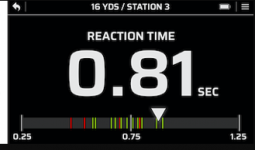A5 Sweet 16
Well-known member
I see things about shooting big game at various angles, mostly as it relates to putting a bullet or arrow through an animal's vitals in the most effective way.
But what about a pheasant? Let's assume the densest part of your shotgun pattern is pretty evenly distributed throughout a 30" circle. And let's ignore shot string for the time being. Where would that 30" pattern ideally be centered on a rooster?
As I think about this theoretical situation, it seems like anywhere from its butt (or almost that far back) to its beak should be just fine. If, in fact, shot is equally distributed in a 30" circle, the head, neck, wings, vitals, & legs should stand an equal chance of being hit, as long as they're somewhere in the circle. No?
Maybe some of you who do a lot of patterning have some different ideas. Would it be ideal to be high or low, since the wings spend the most time NOT in line with the body's axis? Or again, if you're centered somewhere on the birds axis, are those high/low wing positions equally well covered?
This may not be very interesting or helpful and is likely to cause me to miss shots next weekend. But does anyone have any thoughts?
But what about a pheasant? Let's assume the densest part of your shotgun pattern is pretty evenly distributed throughout a 30" circle. And let's ignore shot string for the time being. Where would that 30" pattern ideally be centered on a rooster?
As I think about this theoretical situation, it seems like anywhere from its butt (or almost that far back) to its beak should be just fine. If, in fact, shot is equally distributed in a 30" circle, the head, neck, wings, vitals, & legs should stand an equal chance of being hit, as long as they're somewhere in the circle. No?
Maybe some of you who do a lot of patterning have some different ideas. Would it be ideal to be high or low, since the wings spend the most time NOT in line with the body's axis? Or again, if you're centered somewhere on the birds axis, are those high/low wing positions equally well covered?
This may not be very interesting or helpful and is likely to cause me to miss shots next weekend. But does anyone have any thoughts?



